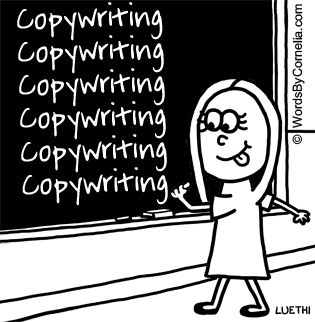
Remember your schooldays?
All that homework – man that was a chore! Let’s face it, it was just so much more fun to spend your afternoons playing with your buddies than slaving over books and numbers and essays. Ugh!
Worst of all was studying for tests.
Perhaps you didn’t want to cram for the test, or you simply forgot about it.
And then, to try and save the humiliation of a Fail, you tried to copy the answers off the brainbox you’d cunningly sat next to in the exam room.
Except, of course, the teacher noticed what you’re up to, and you got a far greater humiliation than the Fail. Perhaps you were made an example of, or made to stand out in the corridor. Or you had to see the scary Headmaster. And, of course, your parents would be notified – horrors!
You soon learned that copying other kids’ work wasn’t in your best interests.
The same lesson about copying relates to your website
When it comes to your website, copying other people’s content is also a bad idea.
While there’s no teacher to punish you, instead there’s Google. (And a punishment from Google, be it a down-graded ranking or total black-listing, is a lot harder and more difficult to recover than even your teacher’s worst punishment.)
Why does Google punish you for copying?
Let’s look at copying content from Google’s point of view.
The bottom line is that Google wants to give its users a good search experience. And a good search experience means that people can quickly and easily find the information they’re looking for. Google also wants the information you find to be helpful and meaningful.
Website content that’s helpful and meaningful is usually unique: it is a bespoke, one-off article that someone has researched and written.
Conversely, low quality content is not so desirable. And over the years, some website owners have tried to “cheat” the Google ranking system by copying other people’s content. And if the internet is full of copies of people’s work, it all gets a bit tedious, spammy and not a very nice or exciting place to be.
Google hates spammy websites. And it hates spammy webmasters who copy content from other people. Google would much rather point to the original source of material – and penalise those who try to copy it. These penalties come in the form of downgrading the rankings of those sites with copied content, or, worse still, removing a website from its search results altogether.
So what is duplicate content, exactly?
You get the general idea that duplicate content is not a good thing, but defining “what is duplicate content” exactly is a little trickier.
If you refer to Google’s official advice, there are some tips there (albeit quite technical), but it’s still not crystal clear. So let me explain some of the more common duplicate content problems in practical terms.
Before I cover common duplicate content problems, one thing you need to be aware of is that duplicate content doesn’t just apply from one website to another, but it also applies to pages on your own website.
The reason for this is that some spammy webmasters create dozens of pages on the same topic, to try and artificially increase their Google rankings. That doesn’t work any more, because of Google’s dislike of duplicate content.
Does Google say what percentage they consider duplicate content?
There are a number of online tools, such as Page Similarity Check Tools, where you put in two website addresses (URLs) and it tells you how similar the pages are as a percentage.
The problem is that Google doesn’t give a percentage in their guidelines, so these online tools aren’t a whole lot of use!
Rather than worry about percentages and other technicalities, here are some practical suggestions on how you can avoid common duplicate content problems.
Common duplicate content problems – and how to avoid them
On a practical level you need to be very careful with the following types of duplicate content:
- Mobile versions of your website that have the same content twice. The solution here is for your webmaster to use the ‘noindex’ meta tag so that the duplicated pages aren’t indexed. (Or better still, build your website so that it’s mobile responsive, and doesn’t need recreating for handheld devices.)
- Printer-only versions of web pages. The printer pages should have the ‘noindex’ tag applied so that these duplicated pages aren’t indexed.
- Similar content that appears across a number of pages. The solution here is to make the copy, order of information and other content as different as possible.
- On e-commerce sites, avoid using the manufacturer’s generic blurb. Chances are that every other re-seller is using the exact same copy, so be unique and write your own product descriptions.
- Syndicate articles carefully. Some people think they’re doing you a favour by ‘promoting’ you on their website by repeating an article. Wrong! Their site could get penalised for duplicate content – but so could yours, if Google hasn’t indexed you as being the original source. The way round this is for the other site to use the ‘noindex’ tag, and to include a link back to your original article. So you can syndicate articles, but do it carefully… and if the other website owner doesn’t know what a ‘noindex’ tag is, or they’re not willing to apply it, then don’t do it. (Note: A bigger problem is that some spammy webmasters use ‘scrapers’ to steal content without your permission. If that happens, you can ask Google to remove the scraped content from their search results.)
- Avoid cheap copywriters. Not all copywriters create unique content; and if you’re buying an article for $5 from someone in India, there’s a good chance that they might have copied someone else’s work. Or they’ve taken someone else’s work, and then put it through a ‘spinner’ which is an automatic software tool that rewrites content. And yep, Google hates ‘spun’ content! If you use a quality copywriter, the content will not only be unique, but it will reflect your tone of voice; demonstrate your company’s expertise; and compel readers to buy from you or otherwise take action.
Those are some of the main duplicate content issues I’ve come up against. There are others, too (as listed in the Google article I linked to) but they are there for your web developer to action, rather than a copywriting issue.
Ask your website developer to help you
The best advice I can give you is to focus on creating unique content, and that your website developer does their part in the programming. Go through the list of action points in Google’s article point by point.
Don’t assume that your web developer knows all this stuff, or will automatically do it: I’ve come across numerous web developers who have never heard of 301 redirects, or will only do them for an extra fee.
Remember that it’s YOUR website and your business at stake, so you have every right to ask questions of your suppliers.
If you play nicely, you should be fine
Just like schoolteachers punish only the naughty kids, Google only intends to punish those website owners who deliberately engage in deceptive practices. Google doesn’t like people who try to cheat the system and take shortcuts; they’ll be punished, sooner or later.
So if you focus on creating unique, high quality content for your website (and have a web developer on side who’s clued up in this area), you should be absolutely fine. (And if the worst does happen, and your site gets blacklisted by Google, you can submit your site for reconsideration.)
Summary
Here are some of the steps you can take so that your website doesn’t suffer from problems with duplicate content:
- If there is a separate mobile version of your website, ensure that the ‘noindex’ tag is used for them.
- If your website has printer-only pages, use the ‘noindex’ tag for them.
- Avoid using similar content across a number of pages.
- On e-commerce sites, avoid using the manufacturer’s generic blurb and write your own.
- Syndicate articles carefully, and get the other website to use a ‘noindex’ tag, and also link back to your original article.
- Avoid cheap copywriters who might steal or ‘spin’ content.
- Ask your web developer which steps they’ve taken to avoid duplicate content issues. Go through the Google article with them as a starting point.
- Focus on creating unique, high quality content for your website.



